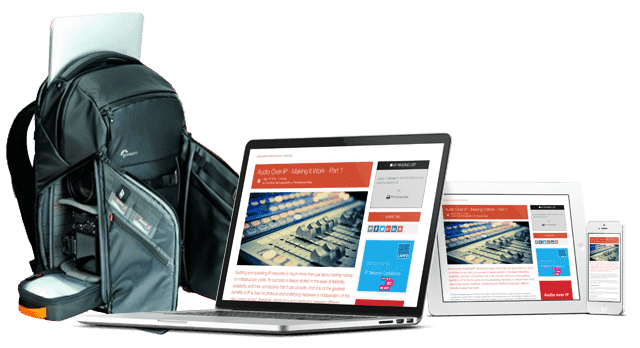NEP Group Partners With Signiant For File Transport
_789_310_s.png)
Media Shuttle will make it easy to get content off the trucks quickly during the event.
The global business relationship between Signiant and NEP Group enable accelerated file-based operations across NEP’s fleet of OB trucks, studios and flypacks. With Media Shuttle, NEP clients can move media assets and associated metadata to and from the venue.
“We’re always looking for smart ways to help our clients and production partners produce and deliver better content. Productions require a more simplified file delivery workflow to make more content available to production stakeholders, who are not necessarily on-site anymore,” explains NEP Group’s Jay Deutsch, Director of Media Solutions in the U.S. “Signiant Media Shuttle provides the flexibility to work with our newer IP and UHD trucks, plus our compact flypack and studio solutions, all of which can now easily leverage delivery of media to those not on-site at the production. This is a real game changer for our clients looking for more efficient means of content archive than removable hard drives.”
NEP explains that file-based workflows have long played a critical role in live event production, enabling enhancements to the viewer experience and expanding monetization opportunities via fast-turnaround distribution of highlights.
“The complexity of sports workflows and the data payloads involved have both increased dramatically in recent years,” says Deutch. “More cameras create more content, higher resolutions result in larger files, and a large number of distribution partners are typically now in the mix. Powerful tools are therefore required to optimize file flow to and from the venue before, during, and after a live event. The truck must be loaded with graphics and pre-recorded segments ahead of the game, and after the game there's a rush to make sure that all valuable recorded content is safely sent home. It's file flow during the event, however, where NEP clients and production partners may see the highest leverage from this new toolset.”
Media Shuttle makes it easy to get content off the trucks quickly during the event and ingested into the desired storage or cloud-based platform, like NEP’s Mediabank MAM platform. Once there, the content can be distributed to global partners quickly, made available to remote editors and moved to the customer’s own archive systems for future use. This content flow model aligns perfectly with live production trends that were accelerated by the COVID pandemic. Remote operations with fewer people on-site can easily be supported, and NEP's clients and production partners can set up, reconfigure, and break down workflows on demand.
You might also like...
Building Software Defined Infrastructure: Asynchronous & Synchronous Media Processing
One of the key challenges of building software defined infrastructure is moving to a fundamentally synchronous media like video to an asynchronous architecture.
Monitoring & Compliance In Broadcast: Monitoring Cloud Infrastructure
If we take cloud infrastructures to their extreme, that is, their physical locality is unknown to us, then monitoring them becomes a whole new ball game, especially as dispersed teams use them for production.
Phil Rhodes Image Capture NAB 2025 Show Floor Report
Our resident image capture expert Phil Rhodes offers up his own personal impressions of the technology he encountered walking the halls at the 2025 NAB Show.
Building Hybrid IP Systems
It is easy to assume that the industry is inevitably and rapidly making the move to all-IP infrastructures to leverage IP’s flexibility and scalability, but the reality is often a bit more complex.
Microphones: Part 9 - The Science Of Stereo Capture & Reproduction
Here we look at the science of using a matched pair of microphones positioned as a coincident pair to capture stereo sound images.








